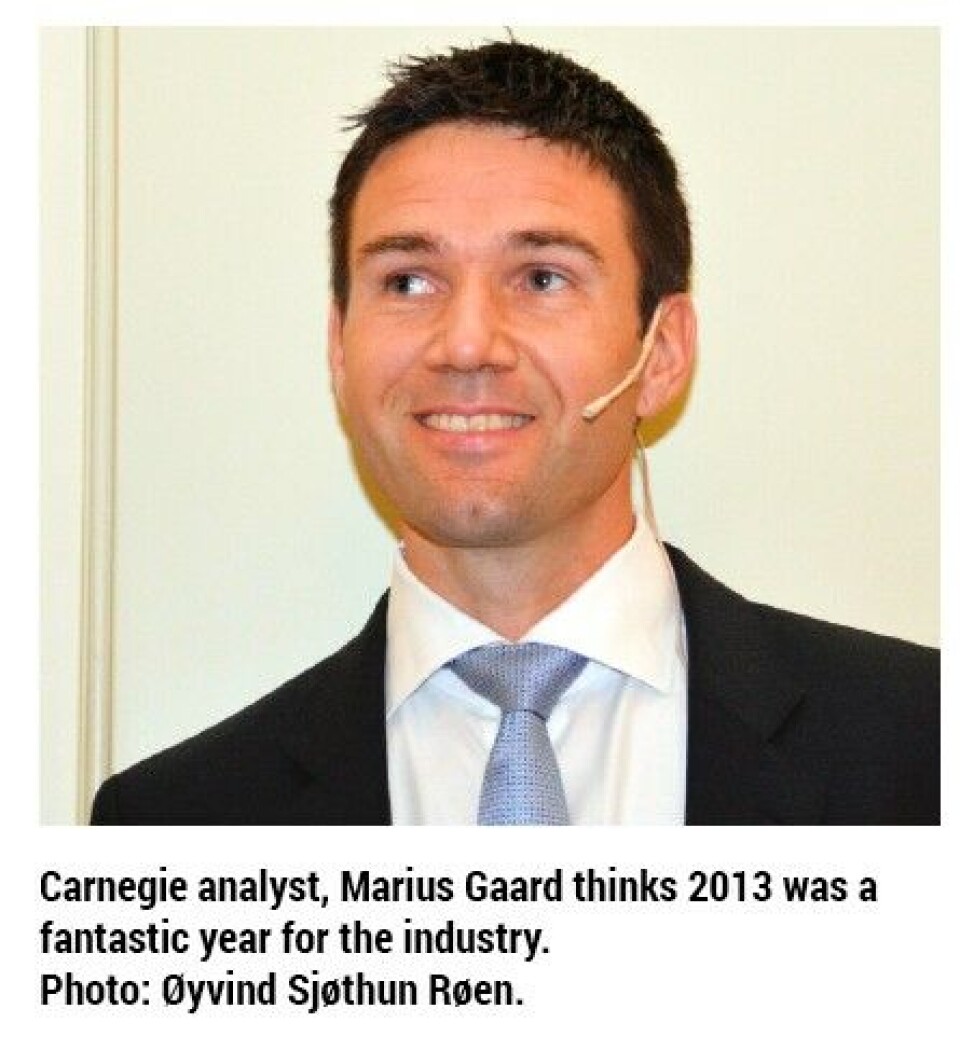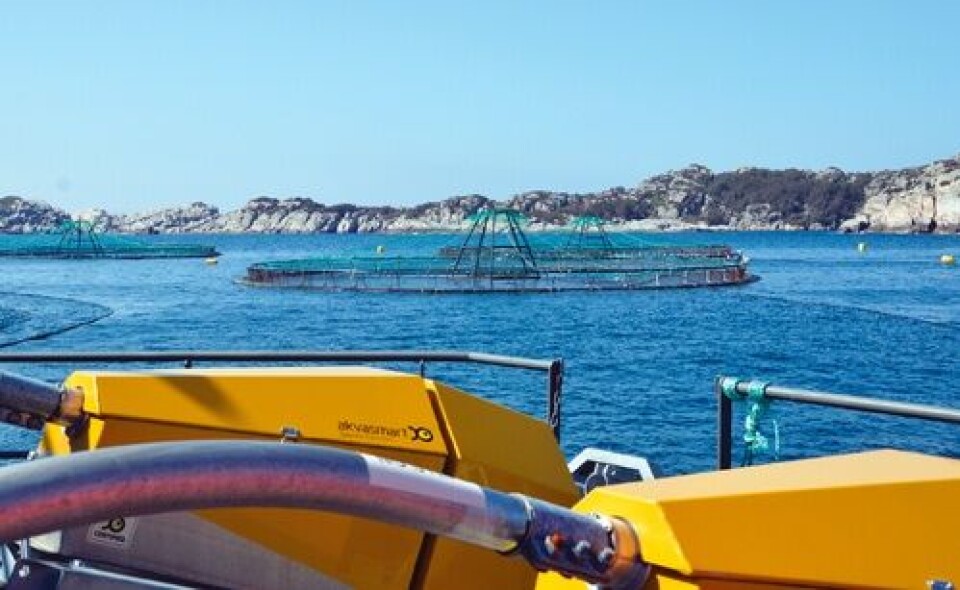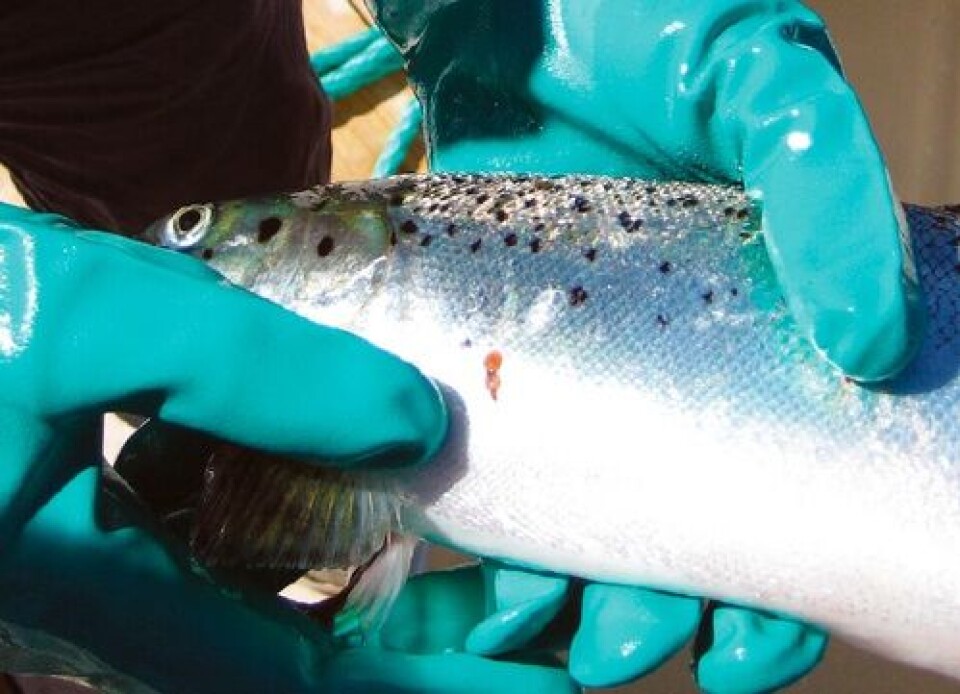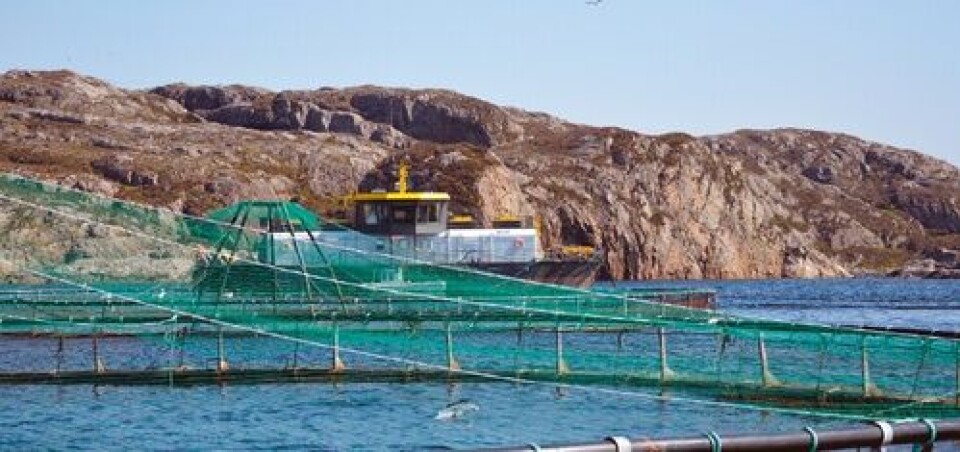The prophet of profit
By Øyvind Sjøthun Røen oyvind@kyst.no
Lice and health issues continually challenged Norwegian salmon farmers in 2012. But, while 2012 was characterised by low prices and marginal profits, 2013 saw prices of over 40 NOK/kg contributing to strong margins and good results. Although 2013 saw an overall increase in production costs, high salmon prices meant that farmers still earned good money. Indeed, Carnegie analyst Marius Gaard only needs one word – “fantastic!” – to describe the economic situation in 2013. “The production volume in Norway was not far behind the record year, 2012, while salmon prices in Europe rose by about 15 NOK/kg above the previous year. This alone gave a total increase in income for the industry of about 15 billion NOK in 2012,” Gaard explains in an interview with Norsk Fiskeoppdrett. “The cost of production was perhaps slightly higher, but with the salmon price increasing by 15 NOK, to NOK 40 per kilo, it was still a highly profitable year,” he says.

Satisfactory lice situation Industry challenges related to sea lice regularly create negative headlines and 2013 was no exception, but Gaard believes that the overall sea lice situation was satisfactory last year. “In recent years, and on an average basis, there have never been as few lice as in 2013. Given the size of the biomass, the abundance of lice in 2013 was very reasonable and the farmers were helped by a very cold winter in the beginning of the year,” he argues. The occurrence of numerous PD outbreaks was more negative, however, and in 2013 as many as 100 outbreaks of the disease were reported in Norway. Figures from the listed companies in Norway show that production costs increased in 2013. Over recent years, the cost of salmon production has remained stable at around 24 NOK/kg, but in 2013 the figures indicate that farmers had production costs of up to NOK 30 per kilo. “Feed costs are 50 per cent of the total cost of producing salmon, and farmers are therefore dependent of the price of the raw materials, including the fluctuating prices of fish oil and fishmeal. The total costs will also rise if farmers do not become more efficient in feed conversion. “In 2014, the costs associated with lice treatment have increased production costs considerably. This means that the industry has become more dependent on higher prices than before, but it does not require exceptionally high prices – at 30 NOK/kg most of the farmers are profitable, at 40 NOK/kg the entire industry earns money. 40 NOK/KG is a high enough price,” he says. Among the companies that distinguished themselves positively on the cost side, Gaard highlights the Faroese aquaculture company, Bakkafrost. “Bakkafrost is a guiding star among the farmers. They have control at all levels, and profitability throughout the value chain – from fish oil, fishmeal and feed, right through to value-added products in the store,” he says.

When salmon prices began to rise sharply towards the end of 2013, there were several commentators who envisioned they would fall back to a much lower level in the beginning of 2014. Nevertheless, salmon prices kept stable at around 40 NOK/kg until late summer 2014, and Gaard believes they will remain high. “There are strong indications that the market will continue to grow and adjust to a price level of 40 NOK/kg. All players in the supply chain make money when the raw material is sold for 40 NOK/kg. The market balance will continue being tight, with slow growth in supply. “Demand continues to grow at a higher rate than supply, which indicates that future price levels should remain high. Considering prices for other animal protein products have increased hugely compared to seafood, I think 40 NOK/kg is not an overly high price,” says Gaard.

Market Outlook Despite high prices, Gaard is surprised that 2014 has not been more challenging, as there have been a number of major issues for the industry to contend with. “The outlook for 2014 had very much in common with the prosperous outlook for 2013, but turned out to be very different – producers faced problems caused by the greater volume of salmon on the international market, a new temporary Maximum Allowed Biomass regime in Norway, the Russian import ban, the continued cooling of trade relations with China and a deterioration in health conditions caused by the increase in lice numbers. “Nevertheless, despite the higher volume in 2014, prices have been about as good as the year before. On the cost side, it looks like 2014 will be a bit worse than 2013. All in all, the margins are slightly lower than in 2013,” he says. When Russia closed the border for Norwegian salmon some analysts predicted that the industry would be hit hard. However, after a short adaptation phase, export levels have gone back to normal. “Global supply has increased by about 100,000 tonnes per year for the past 10 years, while growth in demand has been much higher. This is the major explanation behind why the 100,000 tonnes of Norwegian salmon that were previously exported to Russia were absorbed by other markets in a short time.

“If Russia reopens for business during 2015 and wants to regain its market share of 10.8 per cent of Norwegian salmon, farmers will be spoiled for choice about where to sell. “More and more salmon from Norway is sent to new markets in areas like the Middle East, Asia and South Africa. The recent challenges with Russia also show that there is capacity to increase within existing markets as well,” he adds. In June, the Norwegian government launched a new regulation that allows sites that average no more than 0.1 adult female sea louse per fish to grow their biomass by 5 per cent. However, Gaard thinks very few producers will take advantage of this offer and expects only slight growth in 2014. “These requirements are hard to achieve, so it will probably have to wait for a new licensing round before there’s any significant growth, and that will not be until at least 2017,” said the analyst, who believes the industry’s biggest challenges ahead will be related to growth opportunities and production costs.






















































